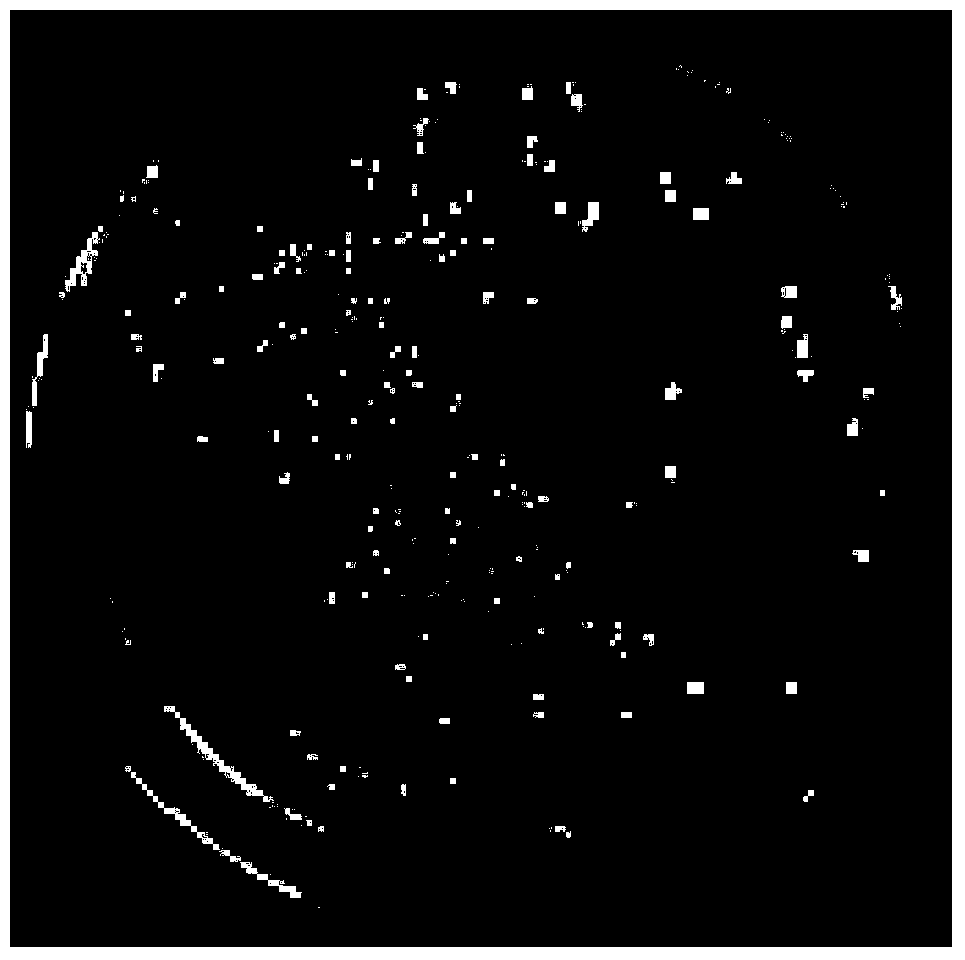Lactobacillus plantarum and application thereof in rice wine brewing
A technology for brewing Lactobacillus plantarum and rice wine, which is applied in the field of lactic acid bacteria, can solve problems that cannot be solved, and achieve the effects of controllable production process, simple operation, and small seasonal impact
- Summary
- Abstract
- Description
- Claims
- Application Information
AI Technical Summary
Problems solved by technology
Method used
Image
Examples
Embodiment 1
[0018] Example 1 Bacterial Strain Isolation and Purification
[0019] Take 10g of rice milk water in 90mL of sterile water, shake and shake well, use a sterile pipette to draw 1mL of the mixture into 9mL of sterile water, shake evenly, repeat this operation, according to the gradient (10 -1 、10 -2 、10 -3 、10 -4 、10 -5 、10 -6 、10 -7 ) to dilute the sample, and use a sterile pipette to take 0.2mL of diluents of different concentrations.
[0020] Uniformly spread on solid tomato juice calcium carbonate medium, improved M17 medium and MRS medium, each gradient has three parallels, and cultured upside down in a constant temperature incubator at 30°C for 2-3 days. Then pick a single colony that has a calcium-dissolving ring that can turn bromocresol purple into yellow, milky white or off-white, with a raised middle. The isolated single colony of lactic acid bacteria is probably not composed of a single bacterium. To obtain simple lactic acid bacteria, it must be purified many...
Embodiment 2
[0025] Example 2 strain identification
[0026] (1) Physiological and biochemical identification
[0027] The isolated lactic acid bacteria were identified for aerobic, oxidase, sugar alcohol fermentation, gelatin, nitrate reduction, indole and other physiological and biochemical characteristics.
[0028] (2) Molecular biological identification
[0029] The 16S rDNA gene method was used to identify the isolated and screened bacteria in molecular biology. According to the highly conserved 16S rDNA gene sequence of prokaryotic organisms, universal primers are designed, and the 16S rDNA gene fragment of the bacteria is amplified using the DNA of the isolate as a template, and the 16S rDNA gene sequence of the isolate is determined, which is homologous to the gene sequence in GenBank Sexual comparison, in order to determine the species of isolates.
[0030] 16S rDNA was amplified by conventional methods, and the amplified PCR product was sent to the sample for sequencing, which...
Embodiment 3
[0032] Embodiment 3 Fermentation brews yellow rice wine
[0033] (1) Preparation of bacterial solution
[0034] Inoculate Lactobacillus plantarum (Lactobacillus plantarum) into the activation medium and activate it for 48 hours before use; use an automatic fermenter to carry out high-density culture of Lactobacillus plantarum (Lactobacillus plantarum). ℃, pH 6.1-6.2 and rotation speed 100r / mim, add culture medium and inoculate bacteria, carry out fermentation for 13-14 hours, and then prepare high-density bacterial liquid by centrifugation at 25000g for 30min.
[0035] (2) Preparation of direct-throwing starter
[0036] Aspirate 1mL of sterilized 10% skim milk in each freeze-dried vial as the suspending base, and the freeze-drying protective agent is: 10% skim milk powder, 30 mL·L glycerin -1 , maltodextrin 100g·L -1 , Trehalose 250g·L -1 , L-sodium glutamate 30g L -1 ;Sterilize by high-pressure steam at 115°C for 15 minutes; transfer 1mL of bacterial cells into a freeze-...
PUM
 Login to View More
Login to View More Abstract
Description
Claims
Application Information
 Login to View More
Login to View More - R&D
- Intellectual Property
- Life Sciences
- Materials
- Tech Scout
- Unparalleled Data Quality
- Higher Quality Content
- 60% Fewer Hallucinations
Browse by: Latest US Patents, China's latest patents, Technical Efficacy Thesaurus, Application Domain, Technology Topic, Popular Technical Reports.
© 2025 PatSnap. All rights reserved.Legal|Privacy policy|Modern Slavery Act Transparency Statement|Sitemap|About US| Contact US: help@patsnap.com


